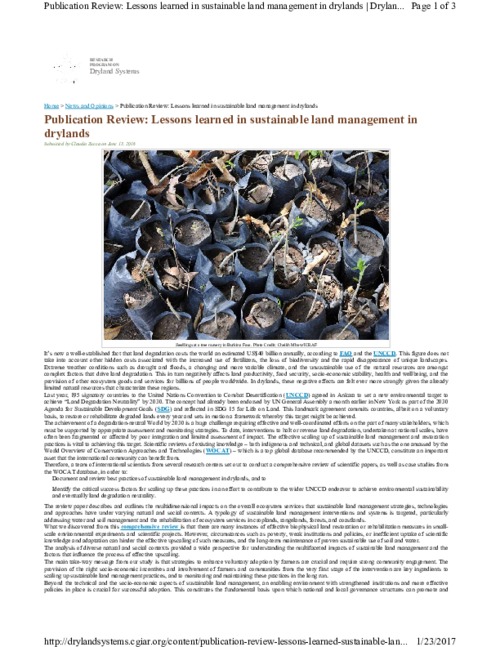Resource information
Extreme weather conditions such as drought and floods, a changing and more variable climate, and the unsustainable use of the natural resources are amongst
complex factors that drive land degradation. This in turn negatively affects land productivity, food security, socio-economic stability, health and wellbeing, and the
provision of other ecosystem goods and services for billions of people worldwide. In drylands, these negative effects are felt ever more strongly given the already
limited natural resources that characterize these regions.
Last year, 195 signatory countries to the United Nations Convention to Combat Desertification (UNCCD) agreed in Ankara to set a new environmental target to
achieve “Land Degradation Neutrality” by 2030. The concept had already been endorsed by UN General Assembly a month earlier in New York as part of the 2030
Agenda for Sustainable Development Goals (SDG) and reflected in SDG 15 for Life on Land. This landmark agreement commits countries, albeit on a voluntary
basis, to restore or rehabilitate degraded lands every year and sets in motion a framework whereby this target might be achieved


